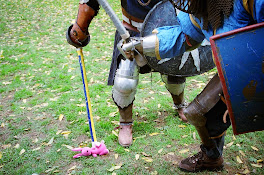First, you have to speak Basque, though Spanish will do for dullards. And then you have to figure out that the big bus schedule panels in front of each bus parking space have in fact nothing to do with the bus that might happen to be parked there. Don't try to buy a ticket from the driver, either, once you've found one going where you're going - no, tickets are sold from the cubbyhold offices way up the block and not even visible from the busses. (It would appear that the bus company with the office closest to the busses has a real advantage in getting passengers.)
Thus it is that, being a novice at this sort of foreign bustaking, it takes far longer than planned to get on a bus to Bilbao.
In the meantime I collect plenty of worries about tomorrow night's 1 am ride home. Eurolines, who so nicely dropped me off here, has no signage at all, much less an office, or even a sticker in somebody else's office. Certainly they will come for me. I have a ticket. I'm on a busguy's list somewhere. There just aren't going to be that many busses passing through here at that hour. And I do plan to be early. Midnight at the very very latest (now that's a pleasant wait, all alone with the idlers and nothing but a stuffed rabbit for security). After all, they were 30 minutes early last time - wouldn't want to miss the boat by being on 'time'.
It's pretty countryside to Bilbao, green for spring, and sharply hilly. Up, down, up. down. The hills aren't high, but steep. No matter how difficult the terrain, every bit is cultivated. The pine trees march down the slopes in neat rows, just like in France, broken up with pastures for horses or cattle or very long-haired sheep. This highway is a busy axis, too. Lots of traffic on the only major road for this half of the border with France, going the west way around the Pyrenees.
In an hour and ten, here we are in Bilbao. The city is not as much to my liking as San Sebastian (sorry, Kymri!). It's too much of a city. Big, grimy, lots of traffic. I find a place to stay without much trouble. Not seeing any hotels in the central part of the city, except for the really big ones beyond my budget (where are the small, reasonable ones??), I just ring at a Pension. I stayed at a pension in San Sebastian and it was very nice. Essentially a small hotel, though no breakfast room and they expect you to be out all day, not hanging around there. At random I ring at the Bilbao and am let into the residential building. The hotel part is on the 4th and 5th floors, and yes they do have a room for the night. It's even vastly cheaper than the Bikian in SS and as we head to my room upstairs I wonder if it's so cheap I've made a dreadful mistake. But no. It's clean and well done and doesn't smell of anything, and there don't seem to be a lot of other guests, at least at this hour. I'll find out how noisy it is at night later.
Off for a walk. It's hot here in Bilbao. On the coast it was chilly in the early morning, and just t-shirt warm at the height of the afternoon. Inland here it's in the high 80's F. They must bake in the summertime.
My little city guide picked up at the hotel says the Fine Arts Museum is free on Wednesdays. It is Wednesday, isn't it? So I figure if I don't like it, I won't feel bad to just leave.
Just so, with their modern collection.
Then this. The White Monks, by Daniel Vazquez Diaz. Four monks around a table, standing. On the table a ball of bread on a plate before each monk. A pitcher, a single glass of water, a platter with two modest-sized fishes. Trout, perhaps.
Monk One, on the right, fingers an open book & stares down into space, worried that these two fish will no way feed four guys for a whole day. Monk Two scowls, angry at Fish! Again! Hates fish. Knows he should not hate fish and hates them more for it. Monk Three is sternly grateful for what the Lord has placed before him. Monk Four, in profile, squeezes his eyes shut, hoping for a miraculous transformation of two fish into four fine steaks, one glass of water into four goblets of wine. Through the window we see Monk Five, the only one surrounded by any color, on his knees, too weak to make it back to the refectory, pulling a dandelion leaf for his lunch. Never mind me, he says; eat your fish, eat your bread, pour your water and pass it around.
My fun with the White Monks aside, every painting tells a story. These monks seem terribly serious and unhappy. There's no joy or serenity. Often with art from the past century, whether they call it modern or contemporary or whatever, I can't figure out what it is. I'm not moved, or awed, or drawn in or happy, sad, angry, at peace, delighted, intrigued, or fascinated. I'm just bewildered, a state I don't find particularly edifying. So I move on. Today I'll wander about, poking around small squares and obscure fountains, enjoying the walk along the river; tomorrow I'll see the Guggenheim, catch a late bus back to San Sebastian, and stalk my ride home.
That's a statue she has her arm around.
.

1 comment:
nanu - i love this travelogue. places i've heard of or read about but not seen. thankyou. steven
Post a Comment